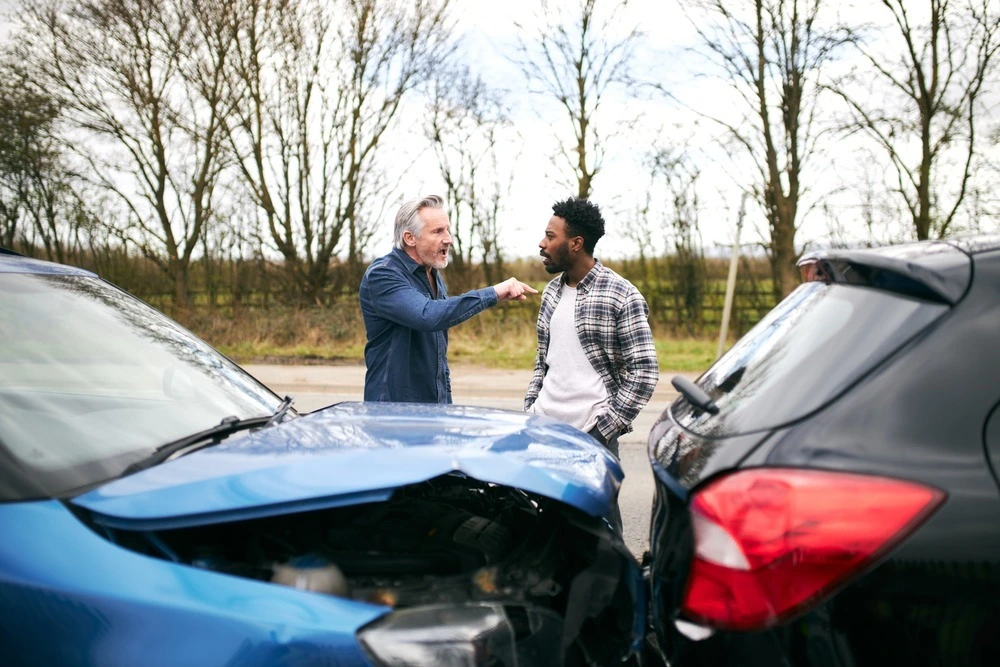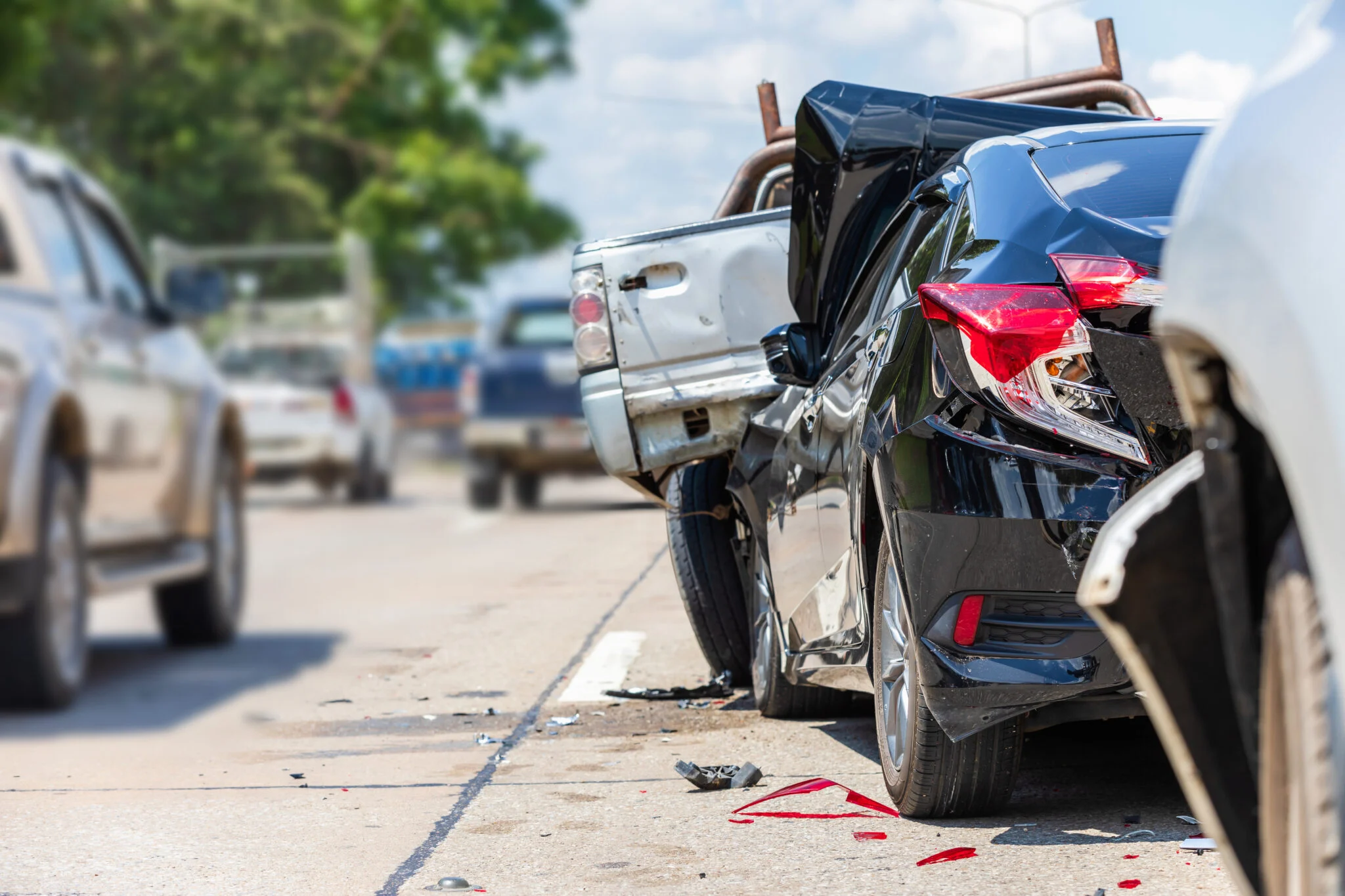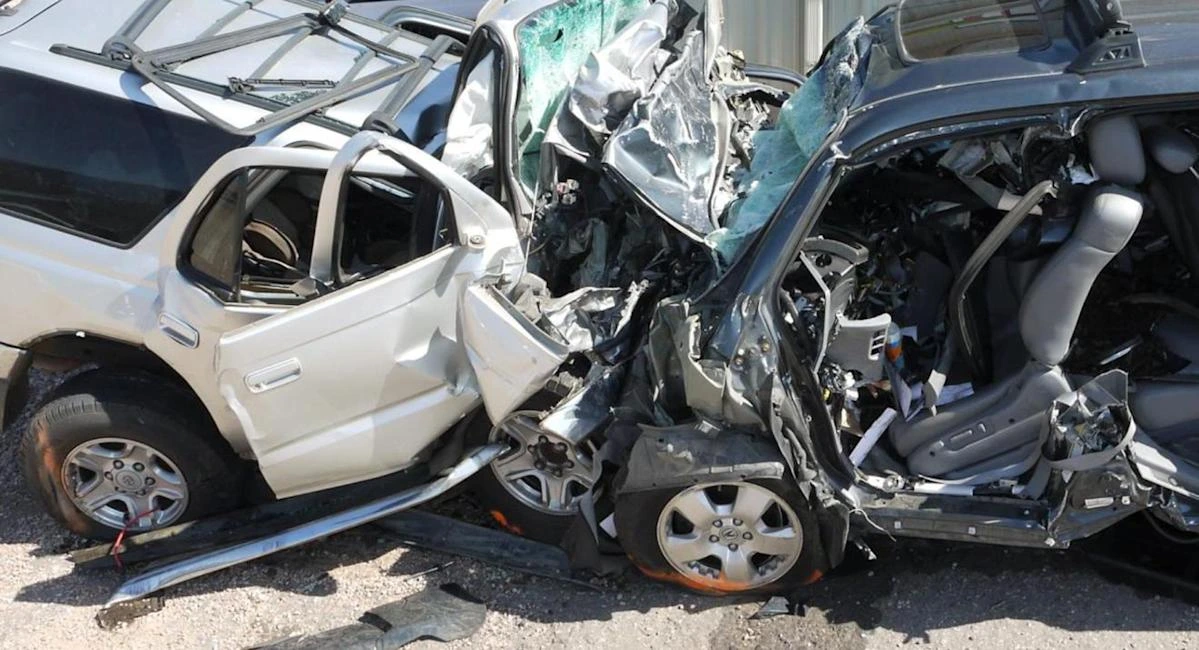You’re cruising along Virginia’s scenic Route 81, the Blue Ridge Mountains framing your view, when suddenly – crash! A reckless driver swerves into your lane, leaving your car mangled and your nerves frayed. As you exchange information, the gut-punch hits: they have no insurance. The weight of potential costs, hospital bills, car repairs, and missed work looms large, threatening your financial stability. If this scenario feels all too real, or if you’re proactively arming yourself against such chaos, you’re exactly where you need to be. In Virginia, where historic charm meets modern hustle, uninsured motorist accidents remain a persistent challenge, even with recent legal strides.
As of September 2025, Virginia’s roads are bolstered by tougher insurance laws, but a stubborn slice of drivers still flout the rules, putting everyone at risk. This in-depth, engaging guide, crafted for commuters in Richmond, families in Roanoke, or beachgoers in Virginia Beach, dives into the nuts and bolts of uninsured motorist (UM) coverage, outlines critical post-crash steps, and reveals why a specialized lawyer can be your lifeline. We’ll also uncover common traps to avoid and share real-world insights to empower you. This is your roadmap to navigate the chaos, secure your recovery, and drive with confidence in the Old Dominion.

Table of Contents
- Understanding Uninsured Motorist Coverage: Virginia’s Safety Net Explained
- What Is Uninsured Motorist Coverage, Anyway?
- Virginia’s Evolving Laws: From Leniency to Liability
- The Harsh Reality: Uninsured Drivers Still Haunting Virginia Roads
- Shocking Stats That Hit Home
- The Human Toll: Beyond the Numbers
- What to Do Immediately After an Uninsured Motorist Crash: Your Action Plan
- Step 1: Prioritize Safety and Seek Help
- Step 2: Notify Authorities and Your Insurer
- Step 3: Medical and Evidence Trail
- Why Hire an Uninsured Motorist Accident Lawyer? The Game-Changer You Need
- Maximizing Your Payout: Expertise Pays Off
- Battling Bad Faith: When Insurers Play Dirty
- The UM Claims Process: A Step-by-Step Breakdown
- Step 1: File the Claim
- Step 2: Investigation and Negotiation
- Step 3: Appraisal or Litigation if Needed
- Common Pitfalls in UM Claims: Dodging the Traps
- Pitfall 1: Underestimating Damages
- Pitfall 2: Insurer Delay Tactics
- Pitfall 3: Fault Disputes and Exclusions
- Choosing the Right Uninsured Motorist Lawyer in Virginia: Your Checklist
- Proven Experience and a Stellar Track Record
- Deep Local Knowledge and Robust Resources
- Transparent Fee Structure and Proactive Communication
- Personalized Approach and Client-Centric Focus
- Reputation and Community Presence
- Strategic Use of Technology and Innovation
- Accessibility and Client Empowerment
- Strategic Use of Free Consultations
- Conclusion: Drive Informed, Recover Empowered
Understanding Uninsured Motorist Coverage: Virginia’s Safety Net Explained
Virginia’s auto insurance landscape has undergone a seismic shift, moving from one of the nation’s most permissive to a model of accountability. The days of dodging coverage with a $500 fee are history; now, every registered vehicle must carry insurance. This evolution aims to shield drivers from the financial fallout of others’ negligence. But what exactly is UM coverage, and why is it your ace in the hole?
What Is Uninsured Motorist Coverage, Anyway?
Think of UM coverage as your personal financial bodyguard. It activates when the at-fault driver lacks insurance, covering medical expenses, lost income, vehicle repairs, and even emotional distress. In Virginia, UM is mandatory, aligning with your liability limits unless you opt out in writing.
Imagine a Lynchburg nurse rear-ended by a pickup with no active policy. Without UM, she’s stuck with a $20,000 hospital tab and weeks of physical therapy. With it, her insurer steps in, treating the claim as if the other driver were fully covered. A game-changer in Virginia is “stacking,” combining UM limits across multiple insured vehicles for higher payouts. For instance, two cars with $50,000 limits could yield $100,000 in a pinch. It’s like carrying an extra spare tire: you hope you won’t need it, but it’s a lifesaver when you do.
Underinsured motorist (UIM) coverage complements this, stepping in when the at-fault driver’s policy falls short. Say their insurance caps at $50,000, but your damages hit $90,000, UIM covers the gap. A savvy tip: Review your policy yearly. Many Virginians carry outdated or insufficient coverage, risking thousands in a state where average crash costs now exceed $25,000.
Virginia’s Evolving Laws: From Leniency to Liability
Virginia’s insurance overhaul reflects a commitment to safer roads. Previously, a loophole allowed drivers to pay a fee and drive uninsured, leaving victims vulnerable. Recent reforms mandate higher minimums: $50,000 per person/$100,000 per accident for bodily injury and $20,000 for property damage. Penalties for non-compliance are steep, fines up to $600, license suspensions, and mandatory SR-22 filings for three years.
Yet, enforcement gaps persist, especially in rural areas like Shenandoah County. These changes could reduce uninsured drivers by 25% by 2027, but for now, UM remains your critical shield. The insight? Staying proactive with robust coverage keeps you ahead of the curve.
The Harsh Reality: Uninsured Drivers Still Haunting Virginia Roads
Despite the crackdown, uninsured drivers remain a thorn in Virginia’s side, weaving through traffic like rogue agents. Urban hubs like Fairfax and rural stretches alike see their impact, creating financial and emotional havoc.
Shocking Stats That Hit Home
Roughly one in eight crashes in Virginia involves an uninsured driver, totaling over 55,000 incidents yearly. These accidents saddle victims with $1.7 billion in out-of-pocket costs, from ER visits to totaled vehicles. Younger drivers (18-24) and lower-income households often skip coverage, citing premiums averaging $1,300 annually as unaffordable.
Hit-and-runs, a growing menace, complicate matters; 45% involve uninsured culprits. In Chesapeake, a 2024 multi-vehicle crash left two injured, the at-fault driver vanishing without a trace. This isn’t just data; it’s a wake-up call. UM coverage isn’t optional; it’s your defense against a persistent threat.
The Human Toll: Beyond the Numbers
Beyond dollars, uninsured crashes take an emotional toll. Victims often face stress, anxiety, or even PTSD; 30% report lingering psychological effects. For small business owners like a Roanoke caterer, a totaled van means lost contracts, compounding the strain. Understanding this reality underscores the importance of preparation.
What to Do Immediately After an Uninsured Motorist Crash: Your Action Plan
The moment metal crunches, your response shapes your recovery. Virginia’s at-fault system hinges on proving the other driver’s negligence, even if they’re uninsured.
Step 1: Prioritize Safety and Seek Help
Move to safety, flip on hazards, and check for injuries. Call 911 for any harm, whiplash, or concussions that often hide in plain sight. Document everything: photos of damage, road signs, and witness contacts. If the driver flees, note their license plate or description; it’s critical for police tracking.
Step 2: Notify Authorities and Your Insurer
A police report is your cornerstone, establishing fault and uninsured status. File it promptly, as Virginia law requires reporting crashes with significant damage or injury. Contact your insurer within 24-48 hours; delays can weaken your claim. Share photos, reports, and a clear account.
Step 3: Medical and Evidence Trail
Seek medical attention immediately; delaying can cast doubt on injury claims. Keep all receipts and records; they’re your proof for UM payouts. Gather witness statements for unbiased support. A pro move: Avoid discussing fault or signing insurer documents without advice. A quick call to a lawyer (often free) sets you straight.

Why Hire an Uninsured Motorist Accident Lawyer? The Game-Changer You Need
Going it alone against insurers is like playing chess with a grandmaster; they know every move. A UM lawyer evens the odds, turning complexity into opportunity.
Maximizing Your Payout: Expertise Pays Off
Specialists unravel policy nuances, like stacking or UIM eligibility, to boost your claim. They bring in experts, accident reconstructionists, and medical pros, to quantify damages, including intangibles like trauma. A Richmond client, for example, turned a $30,000 offer into $120,000 by stacking policies and proving wage loss.
Battling Bad Faith: When Insurers Play Dirty
Insurers may lowball or deny claims, citing “disputed fault” or “policy exclusions.” Virginia law demands fair handling, but violations are common. Lawyers counter with negotiations, arbitration, or lawsuits, often doubling payouts. With contingency fees, you pay nothing up front, typically 33% of the win.
The deeper insight: Lawyers don’t just fight for dollars; they restore balance in a system where insurers hold the cards.
The UM Claims Process: A Step-by-Step Breakdown
Filing a UM claim feels daunting, but it’s manageable with clarity. Expect a 3-12 month timeline, shortened with expert help.
Step 1: File the Claim
Submit your insurer’s required forms, attaching police reports, medical records, and proof of the other driver’s uninsured status (often via DMV records). Timeliness is critical; Virginia insurers can penalize late filings.
Step 2: Investigation and Negotiation
An adjuster evaluates fault and damages, using evidence like telematics or witness accounts. Strong documentation here is key. Lawyers excel at pushing for fair valuations, countering low offers.
Step 3: Appraisal or Litigation if Needed
If negotiations stall, arbitration or court may follow. Stacking can amplify awards, and bad-faith claims can unlock higher payouts. Most cases settle pre-trial, but litigated ones often yield 3x more, $80,000 vs. $25,000 for DIY claims.
Common Pitfalls in UM Claims: Dodging the Traps
Mistakes can sink even strong claims. Here’s how to stay sharp.
Pitfall 1: Underestimating Damages
Settling too soon ignores long-term costs like ongoing therapy or lost earnings. Solution: Use economists or medical experts to project full losses.
Pitfall 2: Insurer Delay Tactics
Endless “more evidence” requests drag out claims. Counter with firm deadlines and legal pressure to keep things moving.
Pitfall 3: Fault Disputes and Exclusions
Virginia’s contributory negligence rule is brutal; any fault on your part can bar recovery. Policy exclusions (e.g., commercial use) also trip up claims. Regular policy reviews and airtight evidence prevent surprises.
Sneaky trap: Social media. Posting about your recovery, like a hiking trip post-injury, can undermine claims. Stay offline or private.

Choosing the Right Uninsured Motorist Lawyer in Virginia: Your Checklist
Selecting the right lawyer for an uninsured motorist (UM) claim in Virginia is a make-or-break decision that can significantly impact your financial and emotional recovery. With insurance companies often playing hardball and Virginia’s unique legal landscape, complete with strict contributory negligence rules and stacking opportunities, the right attorney transforms complexity into opportunity. A skilled UM lawyer not only maximizes your compensation but also ensures you’re not left navigating the maze of claims, denials, and delays alone. Here’s an expanded, detailed checklist to guide you in choosing a legal ally who will champion your case and turn a stressful ordeal into a path toward justice.
Proven Experience and a Stellar Track Record
Experience is the bedrock of a successful UM case. Seek attorneys with 10-15 years of focused practice in Virginia uninsured motorist claims, as general personal injury expertise may not cut it in this specialized niche. Look for a proven history of securing settlements or verdicts above $100,000, indicating their ability to handle high-stakes cases with significant damages. Verify their credibility through the Virginia State Bar’s website to ensure no disciplinary issues, and dive into client reviews on platforms like Avvo, Martindale-Hubbell, or Google for real-world feedback. A lawyer who consistently turns lowball insurer offers, say, $20,000, into six-figure settlements through strategic negotiation or policy stacking is a strong candidate. During consultations, ask pointed questions: “What’s your largest UM settlement in the past two years, and how did you achieve it?” Their response will reveal their expertise and confidence. Bonus points for attorneys who’ve handled cases similar to yours, like hit-and-runs or multi-vehicle crashes, as this shows they’re battle-tested in relevant scenarios.
Deep Local Knowledge and Robust Resources
Virginia’s UM laws are distinct, with nuances like policy stacking, mandatory coverage minimums, and a harsh contributory negligence rule that can bar recovery if you’re even 1% at fault. A lawyer with deep knowledge of these state-specific quirks is non-negotiable. Local expertise also means familiarity with regional courts, judges, and insurer tactics in areas like Richmond, Fairfax, or Virginia Beach. For example, a lawyer who knows how Henrico County judges weigh evidence in UM disputes can tailor arguments for maximum impact. Beyond knowledge, prioritize firms with access to robust resources: in-house investigators to reconstruct accident scenes, medical consultants to validate injury severity, or economists to project long-term losses like future surgeries or missed career opportunities. A firm employing a former Virginia State Trooper for crash analysis, for instance, can uncover evidence that clinches fault in a disputed case. Ask during consults: “What specific resources do you use to build UM cases, and how have they helped past clients?” A detailed answer signals a well-equipped advocate ready to go the distance.
Transparent Fee Structure and Proactive Communication
Most UM lawyers in Virginia operate on a contingency fee basis, meaning they’re paid only if you win, typically taking 33-40% of the settlement or verdict. This eliminates upfront costs, making legal help accessible, but transparency is key. Request a written fee agreement that clearly outlines the percentage, any additional case expenses (like filing fees or expert costs), and how those are handled. Beware firms that tack on vague “administrative fees” that erode your payout. Equally critical is communication: Your lawyer should keep you informed with regular updates, weekly calls, emails, or access to an online case portal, rather than leaving you in the dark. A responsive attorney explains complex terms like “subrogation” or “bad faith claims” in plain language and collaborates on strategy, whether it’s pushing for arbitration or preparing for trial. Test their style in consultations: Are they patient, clear, and engaged? If they’re hard to reach early on, they’re unlikely to improve mid-case. Ask: “How often will I get updates, and what’s your preferred method?” A lawyer who prioritizes clear, consistent communication builds trust and reduces stress.
Personalized Approach and Client-Centric Focus
A great UM lawyer sees you as more than a case file; they understand your unique circumstances and tailor their approach accordingly. Whether you’re a single parent in Norfolk struggling with lost wages, a retiree in Charlottesville facing chronic pain, or a small business owner in Roanoke whose totaled delivery van threatens your livelihood, your attorney should craft a strategy that fits your needs. Some clients need quick settlements to cover immediate bills, while others benefit from holding out for maximum compensation to address long-term impacts like PTSD or reduced earning capacity. Look for lawyers who ask detailed questions about your life and goals, offering flexible meeting options (in-person, virtual, or even home visits for those with severe injuries). Avoid those pushing generic solutions or pressuring you to settle early without exploring all options. In consultations, ask: “How would you approach my specific situation, and what factors would you prioritize?” A thoughtful, customized response shows they’re invested in your outcome, not just their caseload.
Reputation and Community Presence
A lawyer’s standing in Virginia’s legal and local communities can give your case an edge. Attorneys respected by judges, insurers, and peers often secure better settlements because their reputation precedes them; insurers know they’ll fight hard and win. Look for involvement in professional groups like the Virginia Trial Lawyers Association or leadership roles in local bar associations, which signal expertise and influence. Community engagement, such as sponsoring charity events, offering free legal clinics in places like Hampton Roads, or writing educational articles on UM issues, reflects a commitment to service beyond profit. Check their website, LinkedIn, or local media for accolades, published pieces, or mentions in outlets like the Richmond Times-Dispatch or Virginian-Pilot. For example, a lawyer featured in a piece on Virginia’s 2024 insurance reforms likely has their finger on the pulse. Ask: “How do you stay connected to Virginia’s legal and local communities?” A strong presence suggests they’re a trusted player.
Strategic Use of Technology and Innovation
In 2025, top UM lawyers leverage technology to strengthen cases and streamline communication. Firms using tools like crash simulation software, telematics analysis, or AI-driven damage calculators can build compelling evidence that sways insurers or juries. For instance, analyzing a vehicle’s black-box data to prove speed or braking patterns can solidify fault in a hit-and-run. Client portals for real-time case updates or secure document sharing enhance efficiency and transparency. Ask: “What tech tools do you use to manage cases or gather evidence?” A forward-thinking firm with cutting-edge resources can outmaneuver less-prepared opponents, giving you an advantage in negotiations or court.
Accessibility and Client Empowerment
The best lawyers empower you with knowledge, ensuring you understand each step of the process. They should be accessible, offering flexible scheduling for consultations and accommodating your needs, whether you’re in rural Abingdon or bustling Arlington. Look for firms with multilingual staff if English isn’t your primary language, or those with experience handling diverse cases, like accidents involving commercial vehicles or pedestrians. They should also educate you on Virginia’s UM intricacies, like how stacking works or the risks of contributory negligence, so you feel confident in your decisions. During consults, gauge their willingness to explain: Do they break down legal jargon without rushing? A lawyer who empowers you fosters trust and partnership.

Strategic Use of Free Consultations
Most Virginia UM lawyers offer free initial consultations, your chance to shop smart. Come prepared with questions: “How many UM cases have you handled in Virginia? Can you share a recent success story? What challenges do you foresee in my case?” Bring key documents like police reports or medical bills to get tailored advice. Use this time to assess their enthusiasm, clarity, and fit with your personality. A lawyer who listens intently and offers a clear game plan is a good sign; one who rushes or seems distracted may not prioritize you. Compare at least two or three attorneys to find the best match. Pro tip: Ask, “What’s the biggest mistake you see clients make in UM cases?” Their insight reveals their depth and client focus.
Conclusion: Drive Informed, Recover Empowered
Uninsured motorist accidents test Virginia’s drivers, but with robust UM coverage and strategic moves, you’re not at the mercy of chance. Embrace the state’s push for safer roads, and don’t hesitate to tap a UM lawyer when trouble strikes. From Arlington’s bustle to Abingdon’s quiet, you’re equipped to protect your future.
Latest Posts
Uninsured Motorist Accidents in Virginia: Your Comprehensive Guide to Protection and Justice
You're cruising along Virginia's scenic Route 81, the Blue Ridge Mountains framing your view, when suddenly - crash! A reckless driver swerves into your...
Virginia Car Accident Reporting Rules: Who Must File and How Soon?
Car accidents can cause more than just physical injuries and property damage. They trigger legal and administrative responsibilities that every driver...
